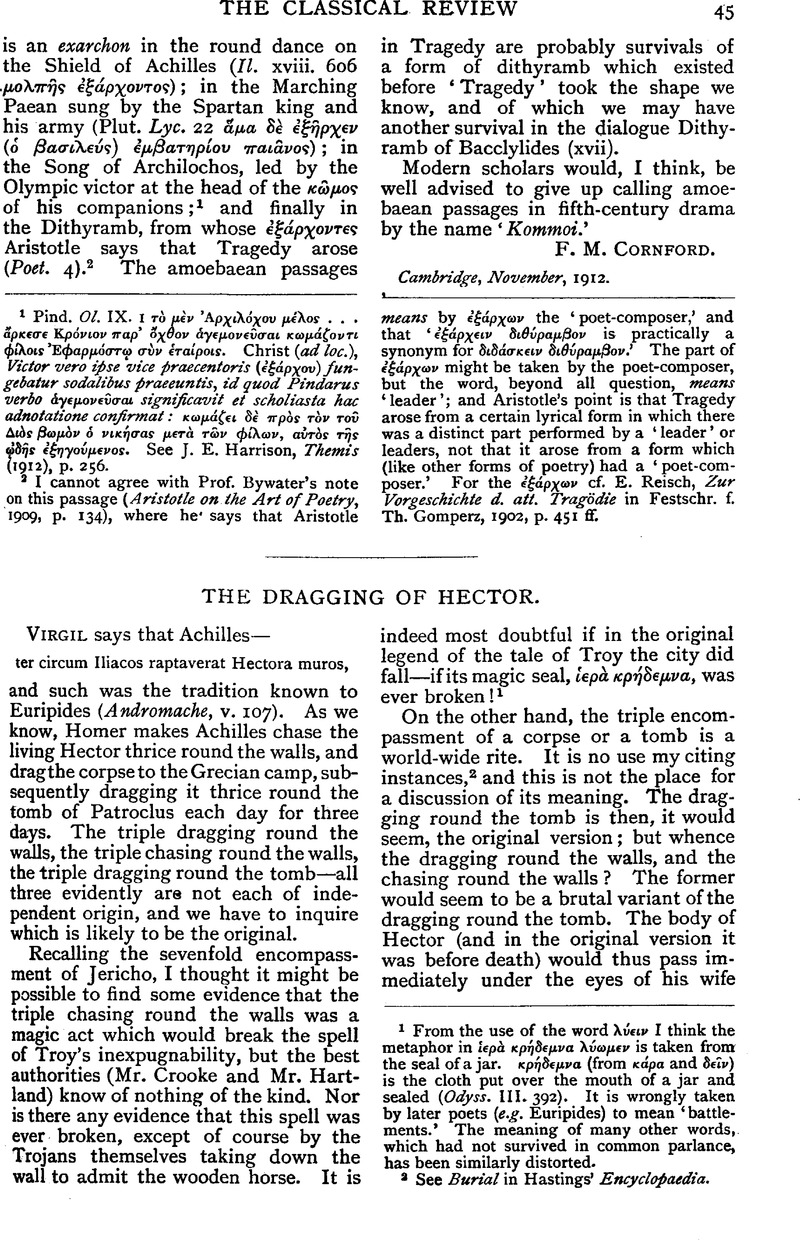
page 45 note 1 From the use of the word λ⋯ειν I think the metaphor in ![]() is taken from the seal of a jar. κρ⋯δεμνα (from κ⋯ρα and δ⋯ν) is the cloth put over the mouth of a jar and sealed (Odyss. III. 392). It is wrongly taken by later poets (e.g. Euripides) to mean ‘battle-ments.’ The meaning of many other words, which had not survived in common parlance, has been similarly distorted.
is taken from the seal of a jar. κρ⋯δεμνα (from κ⋯ρα and δ⋯ν) is the cloth put over the mouth of a jar and sealed (Odyss. III. 392). It is wrongly taken by later poets (e.g. Euripides) to mean ‘battle-ments.’ The meaning of many other words, which had not survived in common parlance, has been similarly distorted.
page 45 note 2 See Burial in Hastings' Encyclopaedia.
page 46 note 1 No one, I suppose, would maintain that this is a blunder of Virgil's, who confused a single dragging round the walls—non-Homeric—with the Homeric triple dragging round the tomb.